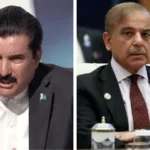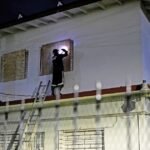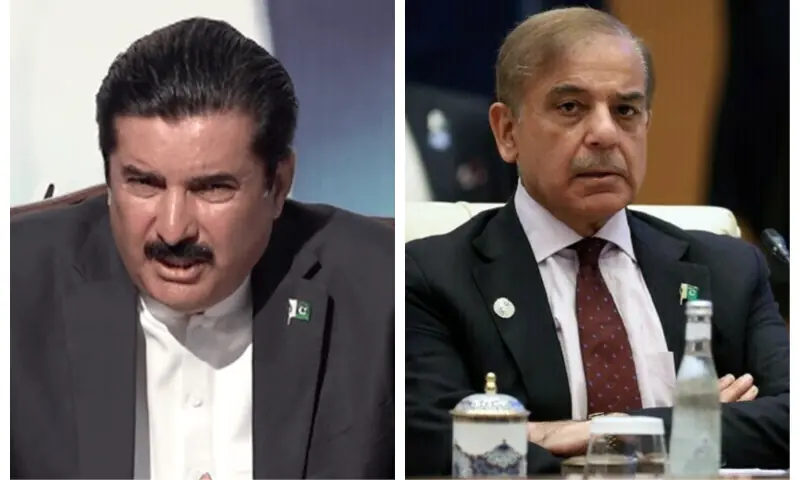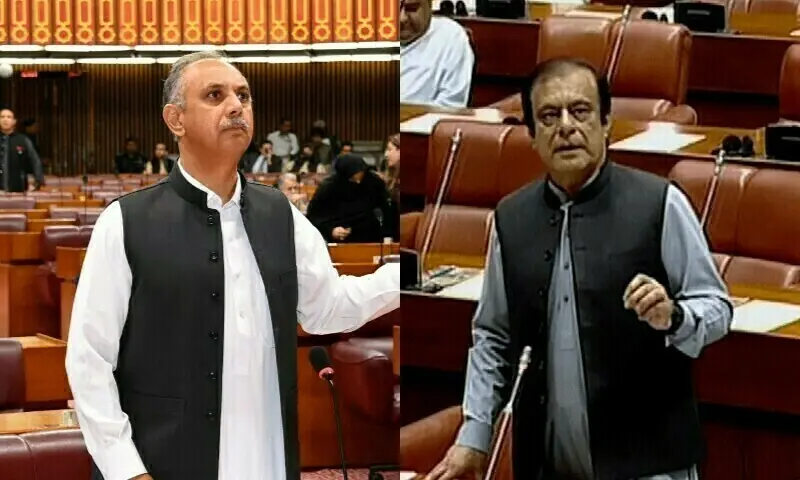THIS is the kind of blow that would sink even the Titanic.
Within days, K-Electric’s share price slid, foreign sponsors weighed international arbitration and analysts warned that a once-profitable utility could be pushed deep into the red, imperilling Karachi’s power supply and perhaps the government’s privatisation plans.
At the heart of the shock is a sharp cut in K-Electric’s multi-year tariff. Last week the National Electric Power Regulatory Authority (Nepra) reduced the rate by Rs7.6 per unit, from Rs39.97 to Rs32.37, effectively overturning its own May determination made after more than two years of consultations and public hearings.
The revision followed review motions filed by the Ministry of Energy and others, who argued for parity with models elsewhere in the power sector after negotiations with private producers. The government has defended the review as a landmark step promoting fairness and regulatory consistency for Karachi’s consumers.
The previous tariff for K-Electric was almost 40 per cent higher than the national average of Rs28 per unit projected for 2025-26 for state-owned distribution companies (Discos). The federal government covered the difference by providing subsidies to K-Electric’s consumers.
To bring in the Titanic analogy again, K-Electric is like a multi-storey cruise ship in which different parts are vertically integrated. And just like those travelling in Titanic, its customers are divided into many categories — with varying degrees of access to electricity depending on their affordability.
Now that this giant ship has hit an iceberg, its financiers are wondering if they could survive the blow.
K-Electric is Pakistan’s only privatised and foreign-owned electricity utility, with investors from Saudi Arabia and Kuwait holding 66.4pc stakes in it.
The abrupt tariff change reinforces the fears of these investors about regulatory inconsistency and political interference — risks that analysts say could deter future investment and further complicate the government’s plans to privatise its loss-making state-owned power distribution companies.
Worryingly, from a Pakistani perspective, these fears are a major reason why K-Electric’s foreign owners are threatening to take the government to some international litigation forum.
K-Electric’s shares plunged on the stock exchange following the tariff cut, as investors sold heavily. Analysts warn that the tariff revision, regulatory uncertainty and threat of legal action could hurt the company’s finances and cast doubt on the future of power-sector privatisation.
Market and sector analysts warn the new tariff leaves KE with little or no profit margin over the seven-year control period to 2030.
“It is clear that the company cannot survive on this tariff,” says Shankar Talreja of Topline Securities, flagging potential “going concern” risks.
Muhammad Ali, an analyst at AKD Securities, calls it a “loss-making” tariff.
“Nepra’s revised tariff determination introduces significant alterations across K-Electric’s generation, transmission, distribution and supply functions,” he says.
Mr Ali notes that K-Electric’s Rs4 billion profit in FY24 under the earlier tariff approval could flip to a Rs70-80bn loss once accounts are restated. Mr Talreja also puts the likely hit to the company at around Rs70bn.
KE’s foreign shareholders — Saudi Arabia’s Al Jomaih Group and Kuwait’s Denham Investments — estimate annual losses could reach Rs100bn during 2024-30.
“It places the company in a very delicate position. How things unfold in the coming years will largely depend on how K-Electric manages to navigate this situation,” Mr Ali argues.
Tighter benchmarks
The revised tariff determination makes significant adjustments in K-Electric’s ROE, T&D and theft loss benchmarks, as well as its bill recovery assumptions.
While each one rupee cut in K-Electric’s tariff translates into roughly Rs15bn in annual losses for the company, energy sector analysts estimate that this will be compounded by the fact that the government is also reducing its subsidy payments to K-Electric by Rs7.6 per unit.
The government is justifying this subsidy removal by stating that it will alleviate a financial burden of nearly Rs700bn over seven years from the federal budget, shifting it to the company.
Though the revised tariff has retained the dollar-based return on K-Electric’s generation business, Nepra has converted its dollar-indexed transmission and distribution tariff into rupees, substantially reducing its return on equity.
Nepra has also terminated the company’s four aging gas-fired power plants citing redundancy and altered the capacity purchase price formula for the remaining two facilities.
Now, only 35pc of capacity payments will be guaranteed, with the remaining dispatch shifted from a take-or-pay to a take-and-pay basis — similar to the arrangement with independent power producers (IPPs).
Under the revised tariff, the company’s recovery benchmark has been raised to 100pc from around 93.3pc, with write-off claims capped at 3.5pc. This too will be reduced to 1pc by 2030.
This means that if K-Electric is supposed to recover Rs100 from its customers as invoiced bills but manages to collect only Rs91.5 (the actual recovery rate in FY24), it can now claim only Rs3.5 under this mechanism to write off its bad debts — or unrecovered bills — and that too after meeting the required criteria and providing evidence of strenuous recovery efforts.
The remaining Rs5 will be recorded as the company’s loss. In effect, the criteria for claiming write-offs are so stringent that the company will hardly be able to avail any, forcing it to absorb the entire shortfall in bill recovery on its books.
“The write-off criteria require the company to produce irrefutable, documented evidence of efforts made to recover dues from defaulters, a near-impossible feat for the company,” Mr Talreja says.
Likewise, the T&D loss benchmarks have been further tightened: the distribution loss target has been reduced to 9pc from 13.9pc, comprising 8pc technical losses and 1pc allowance for law and order issues, with a cumulative reduction of 0.97pc planned through FY30. Transmission losses have been revised to 0.75pc from 1.3pc, cutting the law and order margin to 1pc from 3.39pc in FY24.
Mr Ali notes that these alterations drastically shift the government’s annual subsidy burden of Rs100-150bn onto the utility’s own pocket.
However, it’s not just K-Electric that stands to lose from the blow. The new tariff determination revises down the reference fuel cost component for FY24 from Rs15.99 per unit to Rs14.50 per unit, identifying a Rs28 billion shortfall under the previous benchmark.
Karachi-based business leader Rehan Javed says this shortfall, according to the new tariff, will be recovered from K-Electric’s consumers. In addition, the revision in the reference fuel cost component for FY25 will place an additional burden of Rs24bn on consumers.
“Since the company is in no position to absorb this staggering burden of Rs52bn on units sold during FY24 and FY25, it will inevitably pass it on to consumers. So, contrary to popular perception, the revised tariff isn’t ‘neutral’ for consumers,” Mr Javed says.
The revised determination itself acknowledges this outcome — a point also endorsed by Mr Ali of AKD Securities — unless the government agrees to absorb the cost to provide relief to Karachi’s power consumers.
‘Unusual’ reversal
K-Electric has remained tight-lipped because of the sensitivity of the issue. “You know who is behind this, and I don’t want my software updated,” one senior official quipped with a smile in a pointed reference to past incidents in which politicians, journalists and businessmen were allegedly abducted by unidentified individuals and released only after agreeing to fall in line or stay silent.
The only official comment came via a video message from CEO Moonis Alvi, who warned that Nepra’s recent decision on the company’s tariff would have serious financial consequences that could affect its operations. However, he maintained that the utility would “pursue the route that would be the best possible one for the people of Karachi”.
“Such a reversal after a detailed two-and-a-half-year consultation and analysis is unusual and could impact the company’s investment, planning and long-term sustainability,” he cautioned.
The tariff decision lands after two other blows to sentiment. A recent attempt by investor Zia Chishty to gain control of K-Electric’s parent, KES Power Ltd, through offshore entities collapsed amid disclosure concerns, which K-Electric’s foreign sponsors termed an “orchestrated takeover attempt”. Separately, Shanghai Electric Power withdrew its long-pending $1.77bn plan to acquire K-Electric, citing regulatory bottlenecks and a deteriorating business environment.
In their dispute letter, K-Electric’s foreign shareholders seek $2bn in compensation for alleged breaches of investment protections, including obstruction of transactions, interference in regulatory processes and failure to protect against unlawful third-party actions.
They claim cumulative losses of at least $2bn from the stalled Shanghai Electric sale, depreciation in market capitalisation, higher debt costs and reputational damage. They also say the shift to rupee-based ROE and tighter loss benchmarks could cost nearly Rs100bn annually, threatening the company’s financial viability.
Nepra’s credibility
Critics argue that by revising K-Electric’s tariff, Nepra has inflicted serious damage on its own credibility. The reversal, widely viewed as the result of government pressure, raises fundamental questions about the regulator’s autonomy, consistency and competence.
It also carries troubling implications for the government’s plan to privatise state-owned distribution companies, as investors observe how Pakistan treats its only existing private utility.
“Either the regulator was wrong when it announced the original tariff or it is wrong now,” said a former Nepra chairman, speaking on condition of anonymity. “It is a combination of incompetence and pressure.”
Mr Javed warns K-Electric may now curtail purchases from the national grid to limit losses, risking longer outages for homes and industry.
He notes K-Electric currently imports about 2,000MW from the grid, helping utilise surplus generation and reduce capacity charges on idle plants. If the utility cuts purchases due to financial strain, surplus power will remain under-used despite discounted rates being offered to spur demand.
“The real question now is: who will buy the Discos under such conditions? This situation raises serious concerns for foreign investors, particularly the Saudis, who are exploring opportunities in Pakistan,” he warns.
He further notes that the actual tariff for Discos is actually around Rs39 per unit, not Rs34, since the government absorbs Rs500-600bn in losses each year through the tariff differential subsidy, which ultimately feeds into the circular debt.
“The irony is that while Karachi is not contributing to the circular debt, its citizens are still being forced to pay around Rs40bn annually as a debt surcharge of Rs3.5 per unit,” he argues.
The surcharge, imposed uniformly across the country, is meant to help the government service the mounting circular debt accumulated by the state-owned distribution companies. However, since K-Electric’s consumers do not add to this debt, the charge effectively penalises Karachi’s electricity users for inefficiencies and financial leakages elsewhere in the national grid.
“While Nepra is fixing the subsidy problem for the government, it should also have taken this surcharge out of K-Electric consumers,” he says.
Official viewpoint
The government has described Nepra’s review of K-Electric’s multi-year tariff as a landmark decision that “promotes fairness and regulatory consistency for Karachi’s consumers”.
According to the Power Division, the review eliminated tariff components that conflicted with national regulatory standards — including foreign currency-linked returns and excessive loss allowances — and converted the ROE from a dollar to a rupee basis.
It added that the rationalisation of T&D losses and working capital adjustments was intended to correct structural distortions without undermining legitimate cost recovery.
The Ministry of Energy had challenged the tariff determined for K-Electric, expressing strong reservations over what it termed an unjustified financial burden on both the national exchequer and power consumers.
It argued that the tariff approved for electricity supplied to K-Electric from the national grid was significantly higher than that applied to other distribution companies, warning that this disparity could cost the federal budget around Rs59bn over the next two years.
The petition also objected to the inclusion of recovery losses in K-Electric’s tariff, contending that it would shift an additional Rs200bn onto consumers over the seven-year control period. It further criticised the approval of a dollar-linked return on equity, which was expected to add another Rs37bn to the burden during the tariff period. Concerns were likewise raised about capacity payments to the company’s power plants, projected to exceed Rs82bn.
However, industry observers argue that the rollback undermines investor confidence and sacrifices regulatory stability for short-term fiscal relief, sending mixed signals as Pakistan seeks private capital in its power sector.
They warn that policy volatility will further erode interest in Disco privatisations and that the K-Electric’s case now serves as a cautionary tale of commercial decisions being vulnerable to bureaucratic and political manoeuvring rather than transparent regulatory principles.







